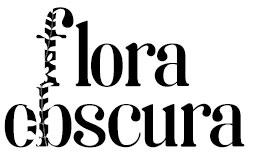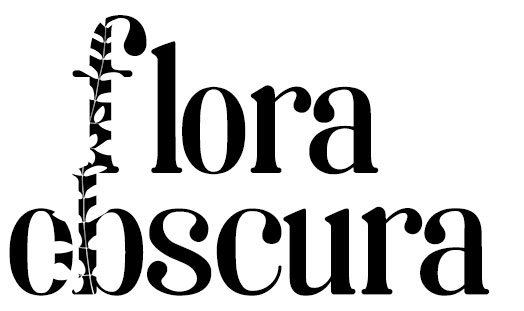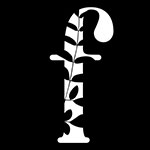List of references
Where does the information about the portrayed plants come from? A list with the most important sources for flora obscura, including self-description and external links, if available (no affiliate links), also for your own research.
Online databases and encyclopedias
Wikipedia (German|English|French)
„A multilingual, web-based, free-contentencyclopedia project supported by the Wikimedia Foundation and based on a model of openly editable content.“
Source for botanical and vernacular names, taxonomic and ethnobotanical information, anatomical descriptions (e.g. fruit type), distribution area, usage.
The plant list
“Collaboration between the Royal Botanic Gardens, Kew and Missouri Botanical Garden enabled the creation of The Plant List by combining multiple checklist data sets held by these institutions and other collaborators.”
List of all botanical names. Source for Current botanical names, taxonomic information.
PROTA4U
“Plant Resources of Tropical Africa. It is an international documentation programme on the useful plants of Tropical Africa.”
Source for botanical and vernacular names, taxonomic information, distribution area, usage.
Tropicos
„Tropicos® was originally created for internal research but has since been made available to the world’s scientific community.”
Botanical database operated by the Botanical Garden Missouri with scans of herbarium specimens. Source for botanical names, taxonomic information, usage.
Encyclopedia of Life
“Our knowledge of the many life-forms on Earth – of animals, plants, fungi, protists and bacteria – is scattered around the world in books, journals, databases, websites, specimen collections, and in the minds of people everywhere. Imagine what it would mean if this information could be gathered together and made available to everyone – anywhere – at a moment’s notice.”
Online encyclopedia of all kinds of living beings with scans of herbarium specimens. Source for taxonomic information and anatomical descriptions.
Global Plants
“Global Plants is the world’s largest database of digitized plant specimens and a locus for international scientific research and collaboration.”
Database with scans of herbarium specimens. Source for botanical and vernacular names, taxonomic information, distribution areas.
Useful Tropical Plants Database
“The Useful Tropical Plants Database contains information on the edible, medicinal and many other uses of several thousand plants that can be grown in tropical regions.”
Online encyclopedia of ethnobotanical valuable plants of the tropics. Source for botanical and vernacular names, taxonomic and ethnobotanical information, distribution areas.
Plants for a future
“A resource and information centre for edible and otherwise useful plants.“
Online encyclopedia of ethnobotanical valuable plants. Source for botanical and vernacular names, taxonomic and ethnobotanical information, distribution areas, usage.
African plants – a photo guide
“This interactive photographic guide shall help you to identify higher plants from Africa.”
Photographic guide for African plants. Source for botanical names, taxonomic information, references to other botanical databases.
The Famine Foods Database
“Plants that are not normally considered as crops are consumed in times of famine. This botanical-humanistic subject has had little academic exposure, and provides insight to potential new food sources that ordinarily would not be considered.”
Database of edible plants that are only used in times of famine.
Books
Digital Atlas of Economic Plants in Archaeology (Groningen Archaeological Studies)
by R. Neef, RTJ Cappers, RM Bekker: “This atlas, which – like the other atlases in the series – is published as a book plus a website, presents the plant parts that have an economic value and are offered for sale at markets and in shops. They include plants that are used as food, spices, stimulants, medicines, poisons, offerings, dyes, tannins, building materials and ground coverings.”
People’s Plants: A Guide to Useful Plants of Southern Africa
by Ben-Erik van Wyk, Nigel Gericke (1998): “This title is a photographic guide to the useful plants of Southern Africa. Traditional and contemporary uses of more than 650 plants are described and illustrated, each dealing with a specific category of plant use: foods and drinks, health and beauty, and skills and crafts.”
The Useful Plants of West Tropical Africa, Volume 6
by HM Burkill: “Revision of JM Dalziel’s original published in 1937, which supplements the 2nd edition of the Flora of West Tropical Africa. Each plant is briefly described along with known economic attributes, geographic range habitat.”
Gemsbok Bean & Kalahari Truffle: Traditional Plant Use by Jul’Hoansi in North-Eastern Namibia (2003)
by Arno Leffers: “This botanical field guide provides concise and easy-to-read descriptions of the distinctive features of 238 plants occurring in the region and highlights their traditional uses.”
Edible Wild Plants of Subsaharan Africa
by Charles R .Peters, Eileen M. O’Brien, and Robert B. Drummond: “Covers all major plant groupings – ferns, gymnosperms and angiosperms – alphabetically by genus and species, and details the parts of the plants that may be, or are, edible.”
„Etymologisches Wörterbuch der botanischen Pflanzennamen“
by Helmut Genaust (3. Auflage, Februar 2012): „Das Buch vermittelt das Wissen über die Etymologie botanischer Pflanzennamen, also die Aufklärung über die Herkunft und Geschichte der wissenschaftlichen Gattungs- und Artnamen (einschließlich Bakterien, Algen, Pilzen, Moosen und Flechten) und gibt einen faszinierenden Einblick in die Geschichte der mannigfachen Beziehungen zwischen Pflanze und Mensch.“
Essbare Wildpflanzen: 200 Arten bestimmen und verwenden
by Steffen Guido Fleischhauer, Jürgen Guthmann, Roland Spiegelberger (19. Auflage, 2017): „200 Arten bestimmen und anwenden.“
Auf den Spuren der Wildfrüchte in Europa
by Jeanne Dericks-Tan und Gabriele Vollbrecht (5. Februar 2009): „Bedeutung und Verwertung von der Vergangenheit bis in die Gegenwart“
Cornucopia
by Stephen Facciola (1990): “A Source Book of Edible Plants”


